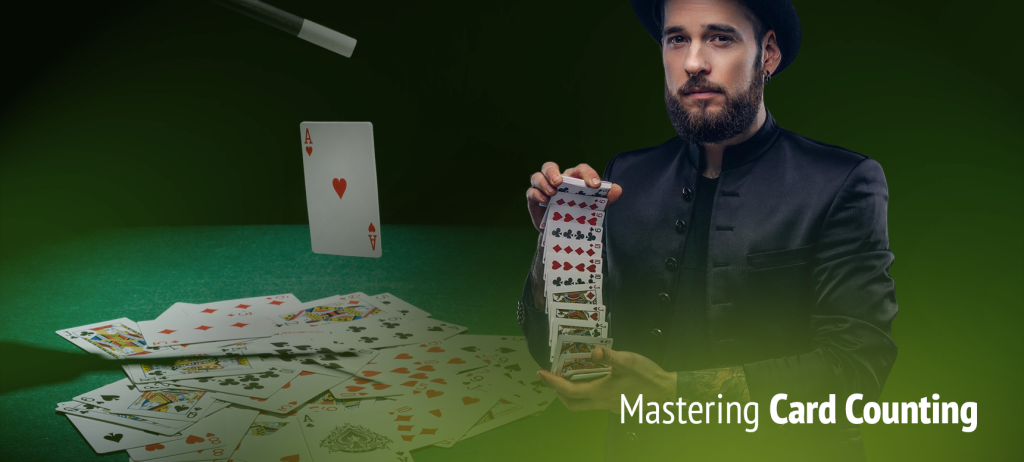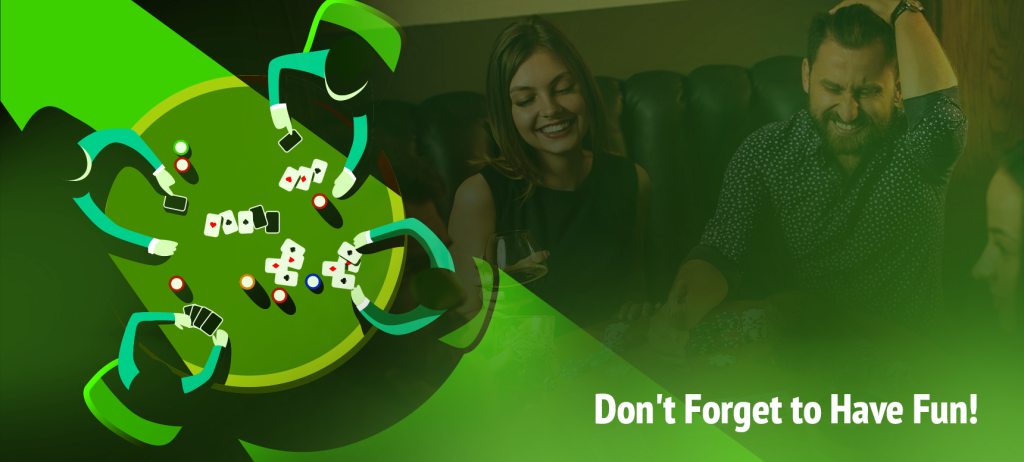
Blackjack is a game of both chance and strategy. As a beginner, you can greatly improve your odds by learning some basic tactics. We’ll explore these in this article, but first, let’s cover the basics of blackjack rules so you can follow along.
The object of Blackjack is to beat the dealer’s hand without going over 21. You are only competing against the dealer, not the other players. The best hand is to get an ace and a 10 card for a “Blackjack”. This pays more than just winning a hand.
Blackjack strategy is the key to maximizing your odds. There are guidelines for when to stand, hit, double down, split, or fold based on your hand and the dealer’s up card. Mastering even a basic system will stack the odds in your favor. Now let’s learn the basics.
Learning the Fundamentals
Some fundamental strategies based on your cards against the dealer’s visible card. Memorizing a simple basic blackjack strategy chart can make a huge difference.
Here’s a quick reference:
| Your Hand | Dealer’s Card | Recommended Action |
|---|---|---|
| 16 or under | 2-6 | Stand |
| 17 or over | 2-6 | Hit |
| 12-16 | 7-Ace | Hit |
| 17-21 | 7-Ace | Stand |
| A-8 | A | Split |
You don’t need to memorize everything yet. Start by knowing to always stand on 17 or higher, and hit 16 or under if the dealer is showing a weak card (2-6). Over time, familiarize yourself with the chart.
Mastering Card Counting

Once you have the basic strategy down, you can take your blackjack game to the next level with card counting. This advanced technique tracks the ratio of high to low cards left in the deck to determine if the odds favor the player or dealer. Here’s a step-by-step guide:
- Assign point values to each card. Tens, face cards, and aces are -1. Twos through sixes are +1. Sevens, eights, and nines are 0;
- Keep a running count as each card is played. Add or subtract the points;
- Calculate the true count by dividing the running count by the decks remaining;
- Bet more when the count favors the player. Bet less when it favors the dealer;
- Make strategic adjustments based on the true count.
Strategic Bet Sizing
We’ve covered basic strategy and card counting. Now let’s discuss how to leverage that edge with proper blackjack betting strategy. The size of your wagers impacts risk, potential profits, and how drastically the odds shift. Use this table as a guide:
| True Count | Bet Spread |
|---|---|
| +1 to +2 | 1x to 2x base bet |
| +3 to +4 | 2x to 3x base bet |
| +5 or higher | 3x to 4x base bet |
- Bet more when the count favors you (positive);
- Bet less when it favors the dealer (negative);
- Base bet is the minimum bet at the table.
Playing Blackjack Online in Canada
Now that you have a solid grasp of blackjack strategy, where should you play to test your skills? Online blackjack is a top option for convenience and game variety. Leading Canada-friendly sites like JackpotCity, Spin Casino, and Ruby Fortune offer:
- Hundreds of real money and free blackjack variants;
- Fast deposits/withdrawals;
- Lucrative welcome bonuses up to $1600;
- Safe and secure encryption technology;
- Mobile play on iOS and Android devices.
Mastering the Double Down

We’ve covered fundamentals, but now let’s drill down on advanced moves like doubling down:
- What is doubling down? Doubling your initial wager in exchange for one additional card. This is only permitted on your first turn.
- When should you double down? When your hand totals 9, 10, or 11 the dealer shows a weak upcard (5 or 6). Also with an 11 vs dealer’s 2-10.
- Why double down? It allows you to increase your bet when the odds favor the player. More money on the table when you’re statistically more likely to win!
- What’s the catch? You only get one extra card, so hope it’s a high one! Doubling down is favorable in many situations, but it’s not always the optimal move depending on the number of decks used.
Practice doubling down at the right times according to basic strategy charts. It takes good judgment but can pay off when used properly. Just don’t get overzealous! Make sure the odds are in your favor first.
Knowing When to Split Pairs
Another advanced move is splitting pairs when dealt two of the same card. Let’s review when it’s favorable:
| Pair Card | Dealer Upcard | Action |
|---|---|---|
| Aces | 2-9 | Always Split |
| 8s | 2-9 | Always Split |
| 2, 3, 6, 7 | 2-7 | Split |
| 4, 5 | 2-7 | Split |
| 9 | 2-6 or 8-9 | Split |
| Tens | 2-9 | Never Split |
Deciding Between Hit or Stand
Once you’ve mastered advanced moves like doubling down and splitting, let’s focus on the most common decision – whether to hit or stand:
- Hit when your hand totals 11 or less. Taking another card has an acceptable risk of going bust;
- Stand on hard 17 or higher. The likelihood of improving your hand is low;
- Hit on soft hands below 18 when the dealer is showing a 9 or lower;
- Stand on soft 18 or higher regardless of the dealer’s upcard;
- Use basic strategy guides for hard totals between 12-16 based on the dealer’s upcard.
Knowing When to Surrender
Offered in some blackjack variants, surrender allows you to forfeit half your bet and fold your hand before the dealer checks for blackjack.
Use this move sparingly in very specific scenarios:
- You have a hard 15 or 16 and the dealer shows a 10 or ace. Their odds of hitting blackjack are high, so minimizing losses is wise;
- You have a hard 14 or below and the dealer shows a 10. The probability they have blackjack is too risky to continue.
Otherwise, avoid surrendering. The odds typically favor standing pat or hitting. Only utilize surrender as a last resort when the likelihood of winning is extremely low. It’s less common than moves like doubling down or splitting, but still a useful tool for certain hands.
Essential Bankroll Tips
So you’ve learned basic strategy and advanced moves, and are now ready to play blackjack. Before hitting the tables, keep these vital bankroll tips in mind:
- Set a gambling budget and stick to it. Only risk what you can afford to lose.
- Make small enough bets to withstand normal variance. For example, have at least 20x the minimum bet if playing $5 tables.
- Avoid chasing losses by throwing good money after bad bets. Walk away if you lose your predetermined bankroll.
- Manage your session bankroll for the night. For example, withdraw $200 for a session and leave ATM/credit cards behind.
- Use winnings to pay yourself first before continuing to gamble. For example, pocket any profits if you double your buy-in amount.
- Take breaks to clear your head and re-evaluate strategy if losing. Don’t try to recoup losses in desperation.
Picking the Optimal Table
You’re prepared with strategy and bankroll – now let’s find the right blackjack table. Keep these factors in mind:
| Consideration | Preference | Reason |
|---|---|---|
| Number of Decks | 1-2 | Better odds & simplifies counting |
| Shuffles | Less frequent | Count stays valid longer |
| Minimum Bet | Lower | Allows smaller bankroll to play longer |
| Maximum Bet | Higher | Room for larger bets when counting |
| Surrender/DD Rules | Allowed | Improves house edge if used properly |
| Payout | 3:2 | Higher payout rewards blackjacks |
| Side Bets | Decline | Just sticks to basic strategy |
Reading Dealer Body Language
While blackjack revolves around statistical strategy, reading dealer tells can further shift odds in your favor in close spots. Experienced dealers may reveal clues providing extra info to guide decisions:
- Nervousness about their whole card can signal strength;
- The lack of reaction to your stand on 16 vs their 10 suggests they don’t have blackjack;
- Hesitation to pull cards indicates more face cards were played;
- Glancing lobby-ward shows distraction to player advantage;
- Over-eagerness for side bet wins hints they need club points.
Why Breaks Are Essential
Now that you’ve digested blackjack strategy tips across betting, counting cards, reading dealers, and more – let’s emphasize taking mental breaks:
- Clears Your Mindset – Processing so many stimuli is mentally taxing. Walking away prevents brain overload;
- Money Management – Stepping back allows you to re-assess wins and losses with a level head;
- Body Re-charge – Just like athletes, your cognitive sharpness reduces over time playing. Breaks re-energize;
- Change of Scenery – New sights and sounds refresh your mental state and elevate energy;
- Review Strategy – Time away allows you to review guidelines and correct any deviations you slipped into.
Don’t Forget to Have Fun!

We’ve covered many tips across strategy, bankroll management, table selection, and more. But ultimately blackjack should be an entertaining experience. Yes, use the advice in this guide to gain an edge. But don’t forget the social elements that make blackjack so enjoyable:
- Chat with players next to you and the dealer when not focused on key hands;
- Compliment big wins for other players;
- Tip the dealer for hot streaks they deal you;
- Take a shot bet or side bet once in a while even if not optimal;
- Transition tables to meet new people and take in the sights.
Winning feels great, but can’t come at the expense of enjoying the journey. Blackjack variance means even the best strategy sees ups and downs. Embrace the thrill of each hand while applying your new skills instead of purely chasing profits. Use proper bankroll management so any losing streak won’t seriously impact your lifestyle. Stay positive and cheery even when cards don’t cooperate. That’s the mark of a winning blackjack player in the long run.
So you can also read articles on other popular casino games such as: Poker, Baccarat, Keno, Sic Bo and others.
